South Africans looking to save on electricity bills through rooftop solar now have one less obstacle to face. Eskom recently announced significant changes to its small-scale embedded generation (SSEG) regulations — a move that simplifies the process and reduces installation costs for many homeowners.
Thank you for reading this post, don't forget to subscribe!These changes eliminate the need for costly professional engineering sign-offs, but the story doesn’t end there. Depending on where you live, your local municipality may still have stricter requirements. Here’s a breakdown of what the new rules mean, who benefits, and what you must do before connecting your solar system to the grid.
Simplified Rules for Eskom-Connected Households
Previously, anyone installing a grid-tied or hybrid solar system connected to Eskom’s distribution network had to secure approval from a registered professional engineer or technologist with the Engineering Council of South Africa (ECSA). This process often cost homeowners thousands of rands and added unnecessary delays.
Under the new Eskom rules, this requirement has been scrapped.
Now, you only need:
- An Electrical Certificate of Compliance (CoC)
- A Basic Embedded Generation Installation (EGI) report
These can be signed off by an Installation Electrician (IE) or a Master Installation Electrician (MIE) registered with the Department of Labour.
However, electricians with only a Single Phase Tester qualification are not allowed to approve these systems, as they are not deemed sufficiently qualified to ensure safety and compliance.
This change reflects Eskom’s recognition that many previous engineering sign-offs were unnecessary and costly for residential users.
Why the Change Matters
Energy experts and civil society groups have long argued that the old rules were excessive and not legally required under the Occupational Health and Safety Act and Electrical Installation Regulations of 2009. These regulations already give qualified electricians the authority to certify installations up to certain voltage limits.
Grant Seeman, National Technical Advisor at the Electrical Contractors Association of South Africa (ECASA), confirms that:
“An Installation Electrician can work on any electrical installation, except for specialised or hazardous locations. Similarly, a Master Installation Electrician can handle AC voltages up to 1,000 volts and DC up to 1,500 volts.”
That means Eskom’s previous engineer requirement effectively duplicated existing legal provisions — driving up costs without improving safety.
Municipal Rules Still Apply
While Eskom’s announcement simplifies life for Eskom Direct customers, most South Africans get their electricity through municipal distributors such as Johannesburg’s City Power, Cape Town’s Energy Directorate, or Ethekwini’s Electricity Department.
Each municipality sets its own rules for small-scale embedded generation (SSEG), and these vary significantly. Some follow Eskom’s lead and accept CoCs from IEs or MIEs, while others still require ECSA-registered professionals to sign off.
Here’s how the major metros currently compare:
| Power Distributor | Minimum Qualification for Solar Sign-off |
|---|---|
| Eskom Direct | Installation Electrician (IE) or Master Installation Electrician (MIE) |
| City of Johannesburg | ECSA-registered professional engineer or technologist |
| City of Cape Town | ECSA-registered professional technician |
| Ethekwini (Durban) | ECSA-registered professional engineer or technologist |
| City of Tshwane | ECSA-registered professional (type not specified) |
If you’re connected to a municipal grid, you must still follow your municipality’s process — even if Eskom’s rules are less strict. Failing to comply could lead to fines, disconnection, or denial of grid connection approval.
Why Municipalities Are Still Holding Back
Municipalities argue that their stricter requirements protect public infrastructure and ensure safety. However, critics say these rules discourage homeowners from registering their solar systems — potentially leading to “unregistered” or “illegal” connections that are harder to monitor.
The South African Local Government Association (SALGA) has acknowledged that high engineering costs create barriers for ordinary households trying to register compliant solar installations.
The upcoming update to the SANS 10142-1 wiring standard may also clarify this issue. The new version will likely remove the note that excludes grid-tied systems from being approved by IEs or MIEs — closing the last regulatory loophole that municipalities rely on to enforce higher standards.
What Homeowners Should Do Now
If you already have or plan to install a solar system, here’s what you should do to ensure compliance and avoid future issues:
- Check who supplies your electricity.
- If you receive bills directly from Eskom, you fall under the Eskom Direct category.
- If your bill comes from a municipality, you must comply with their SSEG policy.
- Consult your local municipality’s SSEG guidelines.
- Visit your municipality’s website or contact their Energy Department.
- Look for terms like “small-scale embedded generation,” “solar PV registration,” or “grid connection policy.”
- Hire a qualified electrician.
- Choose an Installation Electrician (IE) or Master Installation Electrician (MIE) registered with the Department of Labour.
- Always ask for proof of registration.
- Obtain your CoC and EGI report.
- Your installer will handle these once the system is tested and compliant.
- Keep all paperwork for future reference.
- These documents are vital when selling your property, upgrading your system, or applying for rebates and insurance claims.
Also check: No Solar? Here’s the Harsh Reality for South Africans Without Backup
Benefits of the New Eskom Policy
Eskom’s decision is a major win for homeowners and small businesses. It:
- Reduces installation costs by eliminating unnecessary engineering fees.
- Speeds up approval times, allowing solar systems to go live sooner.
- Encourages compliance, as more homeowners can afford to register legally.
- Boosts renewable adoption, helping South Africa move toward energy independence.
As solar energy continues to grow, simpler compliance frameworks will encourage wider adoption, benefiting both the grid and consumers.
Read more: Top 10 Solar Solutions for Homes: Efficient and Affordable Energy Options
The current patchwork of municipal rules creates confusion and inequality between Eskom Direct and municipal customers. Industry bodies are pushing for a uniform national framework for residential solar registration — one that aligns with occupational health and safety laws and avoids unnecessary duplication.
If SALGA and the Department of Mineral Resources and Energy (DMRE) move forward with national harmonisation, South Africans could soon enjoy a more standardised, affordable, and transparent process for going solar.




